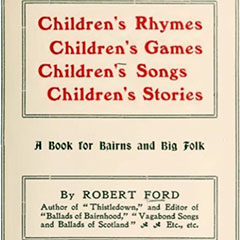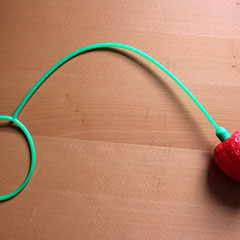Nursery Rhymes: Singing and Playing
Nursery rhymes are a type of music specific to childhood. They are generally little rhythmic poems, which play with different rhymes and sounds and are therefore easy to learn. Nursery rhymes contribute to the learning process behind the acquisition of a language. Like any element of the oral tradition, most nursery rhymes have multiple versions, all acceptable. There are infinite variations of these childish tunes and their origin is hard to trace.
On the playground, in the classroom or at home, nursery rhymes go hand in hand with certain games. They can be used to choose or exclude a player, to pace an activity, or to gain access to an imaginary universe. Childhood comes alive again when we hear the titles Maman les petits bateaux (Mom , the little boats ), Bonjour madame (Hello, ma’am ! ), Une souris verte ( One green mouse ), Un éléphant ( One elephant ), Crème glacée ( Ice cream ), Pomme de reinette et pomme d’api ( Russet apple, lady apple ), just to name a few.
Strongly influenced by the French oral tradition, nursery rhymes are passed from generation to generation by parents and teachers. Over time, children’s songs have evolved and become imbued with the cultural heritage of the country. In Québec, many rhymes, like La poulette grise are regional. Some are even influenced by TV shows, such as Passe-Partout .
Je te tiens par la barbichette (I've got you by the goatee)
Download video: MP4 , (13,90 MB ), WebM , (13,68 MB ), Ogg (11,74 MB ) (1 minute 12 seconds)
In the game of the goatee, both participants are face to face, looking into each other’s eyes, both holding the other person’s chin with their hand. The goal is to stay as long as possible in this position without making the slightest smile or laugh; the first to yield will lose, and his opponent can inflict a light slap on the cheek.
Mrs. Caroline Ricard’s kindergarten class at Jacques-Buteux School
You’ve got me by the goatee
The first of us who laughs
Will earn a tap!



